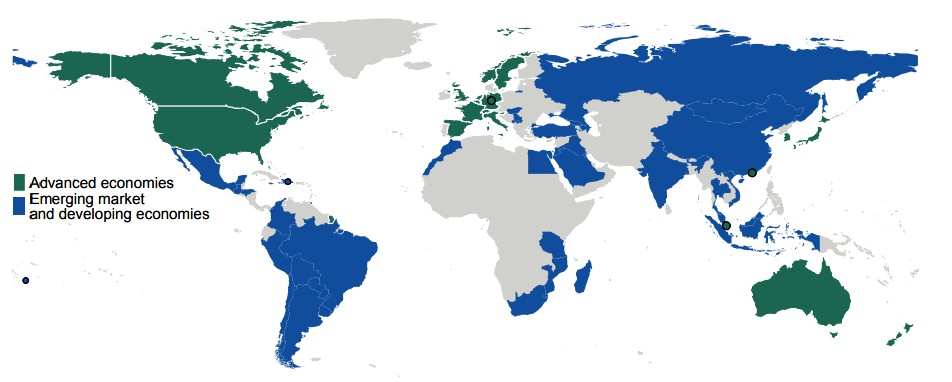Financial Inclusion is Key Motivation Driving CBDC Work in these 7 African Countries, Bank of International Settlements 2021 Survey Shows

The Bank of International Settlements (BIS) has released a report which shows that most central banks in emerging markets and developing economies are looking at the Central Bank Digital Currencies (CBDCs) as a good use case for improved financial inclusion and payments efficiency.
The 2021 report surveyed central banks that represent close to 72% of the world’s population and 91% of the global economic output.
The survey featured:
- 21 respondents from advanced economies
- 44 from emerging markets and developing economies.
The African countries that participated in the survey include:
- Egypt
- Eswatini
- Madagascar (first time participant)
- Morocco
- Mozambique (first time participant)
- South Africa
- Tanzania (first time participant)
Here is a highlight of the survey findings:
- Central banks actively engaging in some form of CBDC work greater by one third (1/3) YoY
- Central banks not currently involved in any CBDC work are primarily in smaller jurisdictions
- Jurisdictions with high mobile phone use, innovation capacity, and internet search interest for CBDCs are more likely to be considering CBDCs
- About 60% of central banks (up from 42% in 2019) are conducting experiments or proof-of-foncenpts on CBDCs
- 14% of central banks are moving forward to development and pilot arrangements on CBDCs
- Financial inclusion emerges as a main factor across emerging and developing economies and remains a top priority for CBDC development
- Financial stability and monetary policy have, over time, become more important motivations for CBDC work in emerging economies
- Payment-related motivations, such as domestic payments efficiency and payments safety remain at the heart of both advanced and emerging economies’ motivations for issuing general purpose CBDCs
- The only area where – on average – motivations for wholesale CBDCs are stronger than for retail CBDCs is in cross-border payments efficiency
- 7 out of 8 central banks in advanced stages of CBDC work are in emerging markets and developing economies with a focus on domestic payments
- Central banks in advanced stages of CBDC work take additional factors such as financial stability into serious consideration
- About a quarter (1/4) of central banks have, or will soon have, the legal authority to issue a CBDC
- Some 26% of central banks do not have the authority to issue a CBDC and about 48% remain unsure
- Central banks collectively representing a fifth of the world’s population are likely to issue a general purpose CBDC in the next three years
- Overall, about 60% of central banks still see themselves as unlikely to issue any type of CBDC in the foreseeable future (ie in the short and medium term)
- Central banks continue to see cryptocurrencies as niche products with no widespread use as a means of payment
- Two thirds (2/3) of central banks are studying the impact of stablecoins on monetary and financial stability
- More central banks in emerging and developing markets have started investigating stablecoins, possibly reflecting a growing awareness of the cross-border implications of widely adopted stablecoins
One noteworthy point from the report is the complexity associated with CBDC projects, which has pushed their development and launch from ‘likely’ for about half of central banks surveyed, to ‘possible’ or ‘unlikely’ in the short term.
At the same time, the steady share of central banks with CBDC ambitions is also a testament to a continued strong interest in the topic.
The report concludes by saying that despite varying motivations for their potential issuance, financial inclusion remains a key motivation and a top priority for CBDC development in emerging and developing markets such as Africa.

